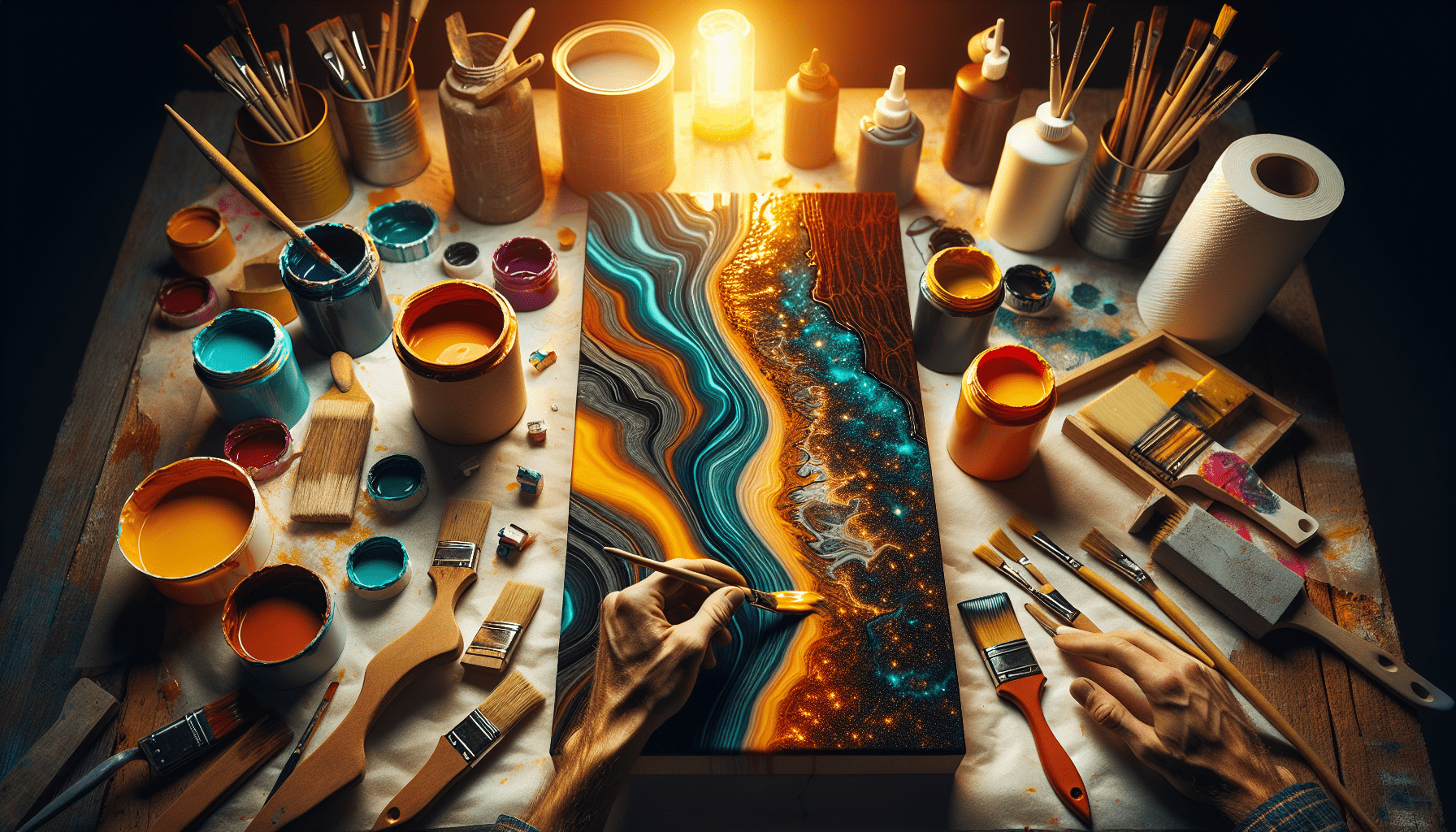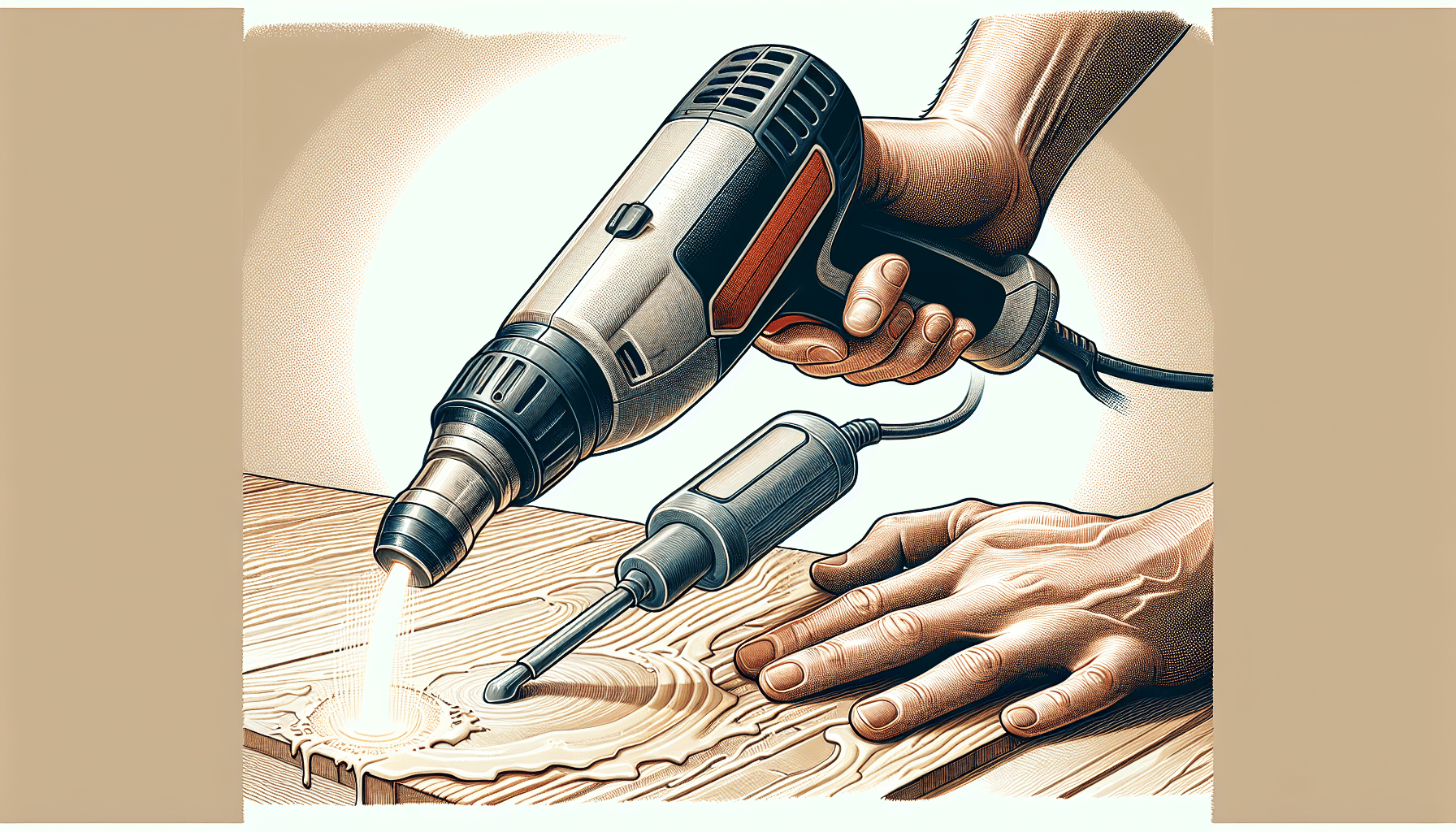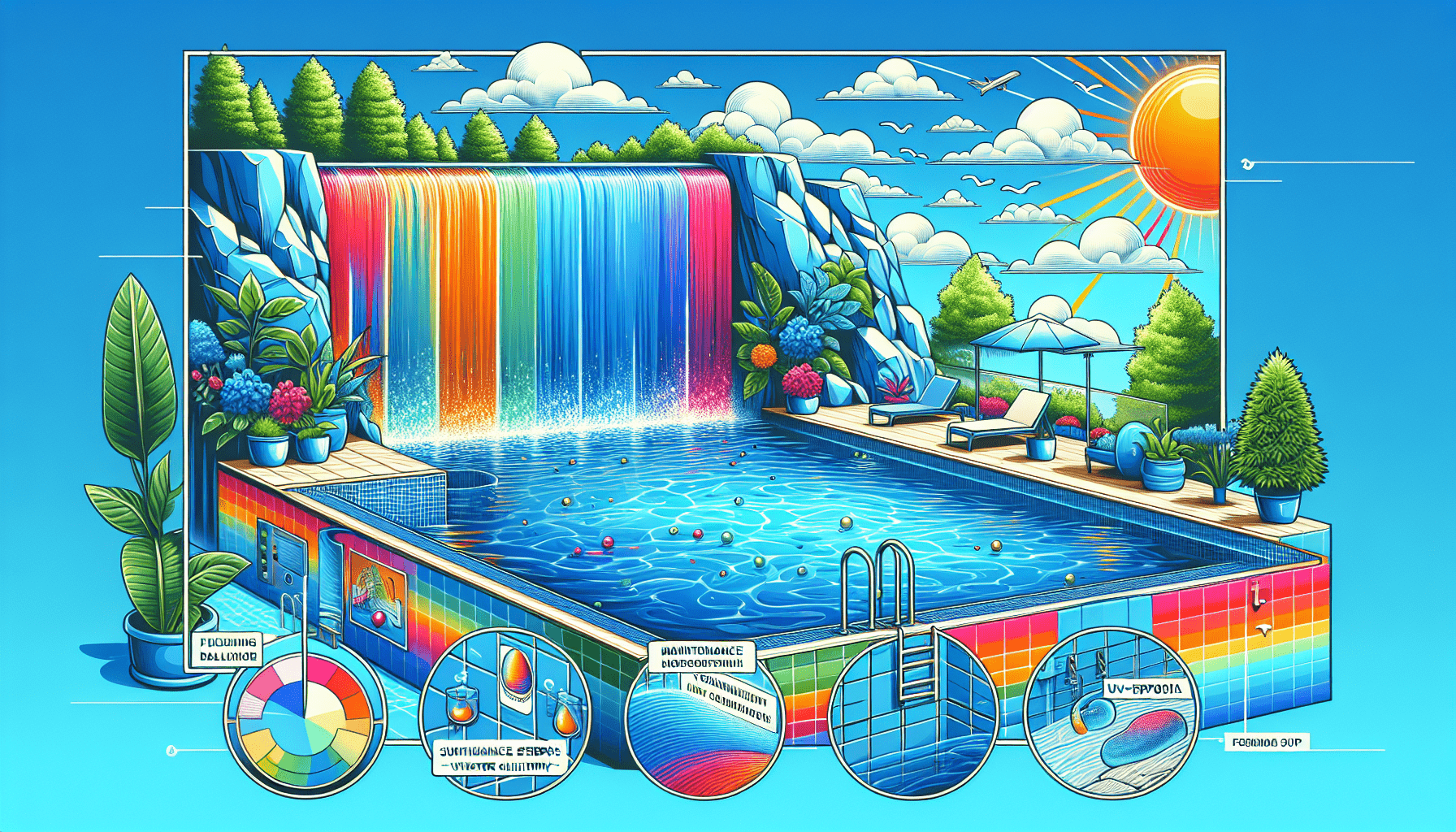This article explores the question of whether it is possible to mix epoxy with paint. It is a common query among DIY enthusiasts and professionals alike who are looking to achieve unique finishes and enhance the durability of their paint projects. By examining the properties of epoxy and paint, as well as their compatibility, we will determine if these two materials can be successfully combined to create a seamless and long-lasting result.
Understanding Epoxy and Paint
Epoxy and paint are two commonly used materials in various industries, including construction, automotive, and manufacturing. While both are applied to surfaces for protection and aesthetics, they have distinct properties and uses. Understanding the differences between epoxy and paint is crucial to ensure successful applications and achieve desired results.
Definition and Properties of Epoxy
Epoxy is a thermosetting polymer that consists of two components – resin and hardener. When these two components are mixed together, a chemical reaction occurs, resulting in a strong and durable material. Epoxy has excellent adhesion properties, making it ideal for bonding to various surfaces. Additionally, it has high resistance to chemicals, heat, and impact.
Definition and Properties of Paint
Paint, on the other hand, is a liquid dispersion that contains pigments, binders, solvents, and additives. It is typically applied as a thin layer on surfaces to provide protection, color, and aesthetic appeal. Paint can be categorized into different types, such as latex, acrylic, oil-based, and enamel, each with its own unique characteristics. Some common properties of paint include ease of application, quick drying time, and the ability to withstand environmental conditions.
Differences Between Epoxy and Paint
Despite some similarities in their protective and decorative functions, epoxy and paint differ in composition, application, and performance. Epoxy is a two-part system that requires thorough mixing and curing to achieve its full strength, whereas paint can be applied directly onto surfaces without any additional mixing process. Additionally, epoxy offers greater durability, chemical resistance, and adhesion compared to most paints. Paint, however, provides a wide range of color options and finishes, allowing for more creative and customizable applications.
Benefits of Mixing Epoxy with Paint
When epoxy is mixed with paint, it can offer several advantages that enhance the performance and appearance of the painted surface. Whether it’s for a residential or commercial project, the addition of epoxy to paint provides the following benefits:
Improved Durability
By mixing epoxy with paint, the resulting coating becomes more durable and resistant to wear and tear. Epoxy adds a protective layer that can withstand heavy foot traffic, abrasion, and impacts, making it an excellent choice for high-traffic areas or surfaces that are exposed to harsh conditions.
Enhanced Adhesion
Epoxy has excellent adhesion properties, which means that when it is mixed with paint, the painted surface will have improved adhesion to the substrate. This enhanced adhesion not only prevents peeling or flaking but also ensures long-lasting performance, especially in areas prone to moisture or temperature fluctuations.
Increased Chemical Resistance
One of the notable benefits of mixing epoxy with paint is the increased chemical resistance of the painted surface. Epoxy offers superior resistance to chemicals, such as oils, solvents, and cleaning agents. This makes the painted surface more resistant to stains, discoloration, and degradation caused by chemical exposure.
Added Gloss or Matte Finish
Epoxy can also alter the appearance of the paint, providing options for a gloss or matte finish. Depending on the desired aesthetic, adding epoxy to the paint can create a shiny and reflective surface or a more subdued and matte look. This versatility allows for customization and creative expression in various applications.
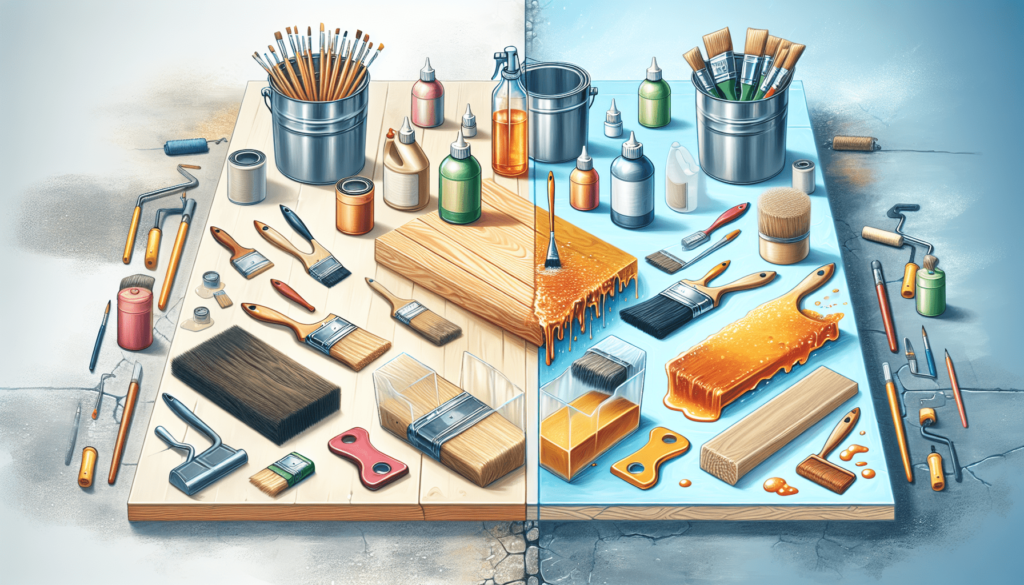
Considerations Before Mixing Epoxy with Paint
While the benefits of mixing epoxy with paint are evident, there are several considerations that need to be taken into account before embarking on the mixing process. These considerations include:
Compatibility of Epoxy and Paint
It is crucial to ensure that the epoxy and paint are compatible before mixing them together. Some epoxy formulations may not adhere well to certain types of paint, leading to poor performance and adhesion issues. Checking the manufacturer’s instructions for compatibility or conducting a small test patch is recommended before proceeding with the mixing process.
Surface Preparation and Priming
Proper surface preparation is essential to achieve optimal adhesion and performance when mixing epoxy with paint. Surfaces should be clean, dry, and free from any contaminants or previous coatings. In addition, applying a suitable primer can further enhance the adhesion of the epoxy-paint mixture to the substrate.
Curing Time and Drying Conditions
After mixing epoxy with paint, it is important to allow sufficient time for the coating to cure and dry properly. Each epoxy and paint combination may have different curing times, so it is crucial to follow the manufacturer’s recommendations. Additionally, factors such as temperature, humidity, and ventilation can affect the drying time and overall performance of the coating.
Safety Precautions
Working with epoxy and paint requires attention to safety precautions. Epoxy and some paints contain chemicals that may cause skin irritation or respiratory problems. It is advisable to wear appropriate protective equipment, such as gloves, goggles, and a respirator, to minimize exposure to potentially harmful substances. Adequate ventilation should also be ensured when working with these materials in enclosed spaces.
Types of Paint Compatible with Epoxy
Not all types of paint are suitable for mixing with epoxy. However, several common types of paint can be successfully combined with epoxy, providing a wide range of options for different applications. These types include:
Latex Paint
Latex paint is water-based and is a popular choice for interior and exterior applications due to its ease of use, low odor, and quick drying time. When mixed with epoxy, latex paint can enhance the durability and moisture resistance of the painted surface, making it suitable for areas with high humidity or damp conditions.
Acrylic Paint
Acrylic paint is a versatile and widely used type of paint that is commonly used in art and craft projects. When combined with epoxy, acrylic paint can provide a glossy finish and improved adhesion. The resulting coating is also resistant to UV damage and color fading, making it suitable for outdoor applications.
Oil-based Paint
Oil-based paint is known for its durability and smooth finish. When mixed with epoxy, oil-based paint creates a robust and long-lasting coating that is resistant to stains, impacts, and weathering. It is commonly used in commercial and industrial applications where a high level of protection is required.
Enamel Paint
Enamel paint is a type of oil-based paint that provides a hard and durable finish. It is commonly used for metal surfaces, such as automotive parts and appliances. Mixing enamel paint with epoxy can enhance its resistance to scratches, chemicals, and corrosion, making it suitable for demanding environments.
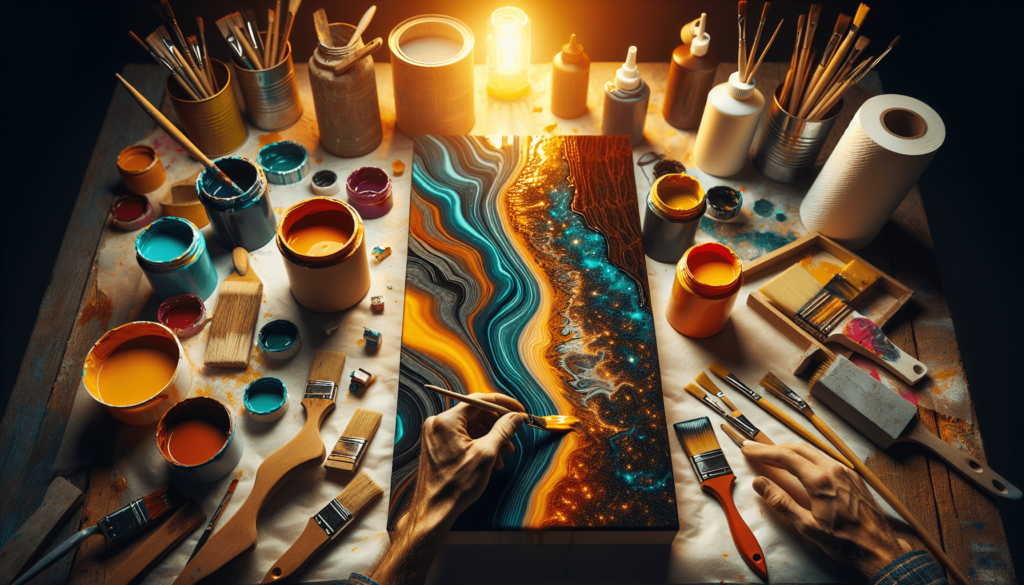
Steps to Properly Mix Epoxy with Paint
To ensure a successful mixture of epoxy and paint, the following steps should be followed:
Choose Appropriate Epoxy and Paint Combination
Selecting the right epoxy and paint combination is crucial for achieving the desired performance and aesthetics. Consider the specific requirements of the project, such as durability, chemical resistance, and desired finish. Consult with the manufacturer or a professional to determine the best epoxy and paint combination for your needs.
Calculate Mixing Ratios
Epoxy and paint mixtures require precise ratios to ensure proper curing and optimal performance. Follow the manufacturer’s instructions or guidelines to determine the appropriate mixing ratios. Failure to adhere to the recommended ratios may result in weak adhesion, poor durability, or other performance issues.
Prepare for Mixing
Before mixing epoxy with paint, ensure that all necessary tools and equipment are ready. This may include containers for mixing, stir sticks or paddles, and a measuring scale or cup. It is essential to work in a well-ventilated area and use appropriate personal protective equipment to minimize exposure to potentially harmful fumes or chemicals.
Mix Epoxy and Paint Thoroughly
Combine the measured epoxy and paint components in a clean mixing container. Use a stir stick or paddle to thoroughly mix the two components together. It is essential to mix the epoxy and paint for the recommended duration to ensure proper blending. Careful mixing will result in a consistent and homogenous mixture.
Application Techniques
After thoroughly mixing epoxy and paint, apply the mixture to the prepared surface using appropriate application techniques. The specific technique will depend on the nature of the project and the desired finish. Consider factors such as the type of surface, desired thickness, and the equipment available for application, such as brushes, rollers, or sprayers. Follow the manufacturer’s instructions for the recommended application methods and ensure even and consistent coverage.
Common Problems When Mixing Epoxy with Paint
While mixing epoxy with paint can offer numerous benefits, there are potential issues that may arise if the process is not executed properly. Understanding these common problems and their causes can help prevent them from occurring:
Inconsistent Color or Texture
Inconsistencies in color or texture can occur when the epoxy and paint components are not mixed thoroughly or when the mixing ratios are incorrect. It is crucial to follow the manufacturer’s instructions precisely and ensure that the mixing process is carried out meticulously to achieve a uniform mixture.
Poor Adhesion or Peeling
Poor adhesion or peeling of the epoxy and paint coating can be caused by improper surface preparation, inadequate priming, or using incompatible paint types. Thoroughly clean and prime the surface before applying the mixture, and ensure compatibility between the epoxy and paint to promote strong adhesion.
Blistering or Bubbling
Blistering or bubbling may result from excessive moisture or trapped air in the surface or within the epoxy-paint mixture itself. Proper surface preparation, including moisture testing, and allowing sufficient time for trapped air to escape during mixing and application can help prevent these issues.
Cloudiness or Haze
Cloudiness or haze in the epoxy-paint mixture can occur if the mixing ratios are imprecise or incompatible components are used. To avoid this problem, ensure accurate measuring and follow the recommended mixing ratios. Additionally, use epoxy and paint formulations that are specifically designed to be compatible with each other.
Applications for Epoxy mixed with Paint
The combined use of epoxy and paint can be applied in a variety of settings and for different purposes. Some common applications include:
Floor Coatings
Epoxy mixed with paint is often used as a floor coating to provide durability, chemical resistance, and aesthetic appeal. Whether in a residential garage, industrial warehouse, or commercial space, epoxy-painted floors offer enhanced protection against stains, impacts, and wear.
Countertops and Surfaces
In kitchens, bathrooms, or other areas where surfaces are exposed to moisture, heat, and daily use, epoxy-painted countertops and surfaces provide an excellent solution. The combination of epoxy and paint offers superior resistance to stains, chemicals, and scratches, making them ideal for both residential and commercial applications.
Furniture and Woodwork
Epoxy mixed with paint can transform ordinary wooden furniture or woodwork into durable and visually appealing pieces. By adding a layer of epoxy-painted finish, the furniture gains increased resistance to scratching, UV damage, and moisture.
Automotive and Marine
Automotive and marine industries frequently utilize epoxy mixed with paint for vehicle exteriors, marine coatings, and other applications. The combination of epoxy and paint provides corrosion resistance, impact protection, and a glossy finish desired in these demanding environments.
Professional vs. DIY Approaches
When considering mixing epoxy with paint, individuals have the option of hiring a professional or undertaking a do-it-yourself (DIY) project. Each approach has its own set of benefits and considerations:
Benefits of Hiring a Professional
Hiring a professional ensures that the epoxy and paint mixture is applied correctly and efficiently. Professionals have the expertise and experience to achieve optimal results, minimizing the potential for mistakes or issues. They are also equipped with the necessary tools and equipment to carry out the project safely.
DIY Tips and Considerations
For those who prefer a hands-on approach, a DIY project can be a viable option. However, it is important to thoroughly research and understand the mixing process, safety precautions, and application techniques. Following the manufacturer’s instructions, seeking guidance from experts, and practicing on small test areas are recommended before embarking on a larger DIY project.
Alternative Options to Mixing Epoxy with Paint
While mixing epoxy with paint is a popular method to achieve desired results, alternative options are available to meet specific needs and preferences. These alternatives include:
Epoxy Coatings
Instead of mixing epoxy with paint, using pre-formulated epoxy coatings can provide a hassle-free solution. Epoxy coatings are specifically designed to offer enhanced durability, chemical resistance, and aesthetics. They come in various colors and finishes, allowing for customization and simplifying the application process.
Paint Additives
Paint additives can be used in conjunction with paint to enhance specific properties, such as durability, adhesion, or glossiness. These additives are generally formulated to work with specific types of paint and can impart additional benefits without the need for mixing epoxy.
Epoxy Resin Tints
For individuals seeking more vibrant and unique colors, epoxy resin tints can be added to clear epoxy. These tints provide a range of opaque or translucent colors, allowing for creative expression and customization in epoxy applications.
Conclusion
Understanding the differences between epoxy and paint is crucial for selecting the appropriate materials and achieving satisfactory results. While both are distinct substances with unique properties, combining epoxy with paint can offer numerous benefits such as improved durability, enhanced adhesion, increased chemical resistance, and customizable finishes. However, it is essential to carefully consider compatibility, surface preparation, curing time, and safety precautions before embarking on the mixing process. Whether opting for a professional approach or a DIY project, thorough research, and proper application techniques will ensure a successful outcome. Alternatives to mixing epoxy with paint, such as epoxy coatings, paint additives, and resin tints, provide additional options for meeting specific needs and preferences. Further research or consultation is encouraged to determine the most suitable approach and materials for individual projects.
